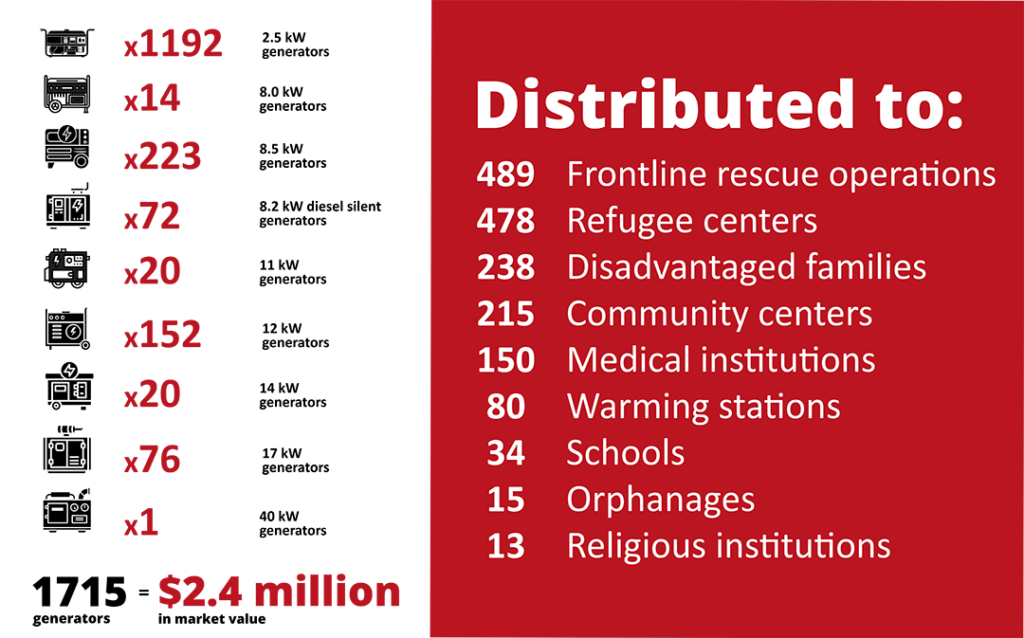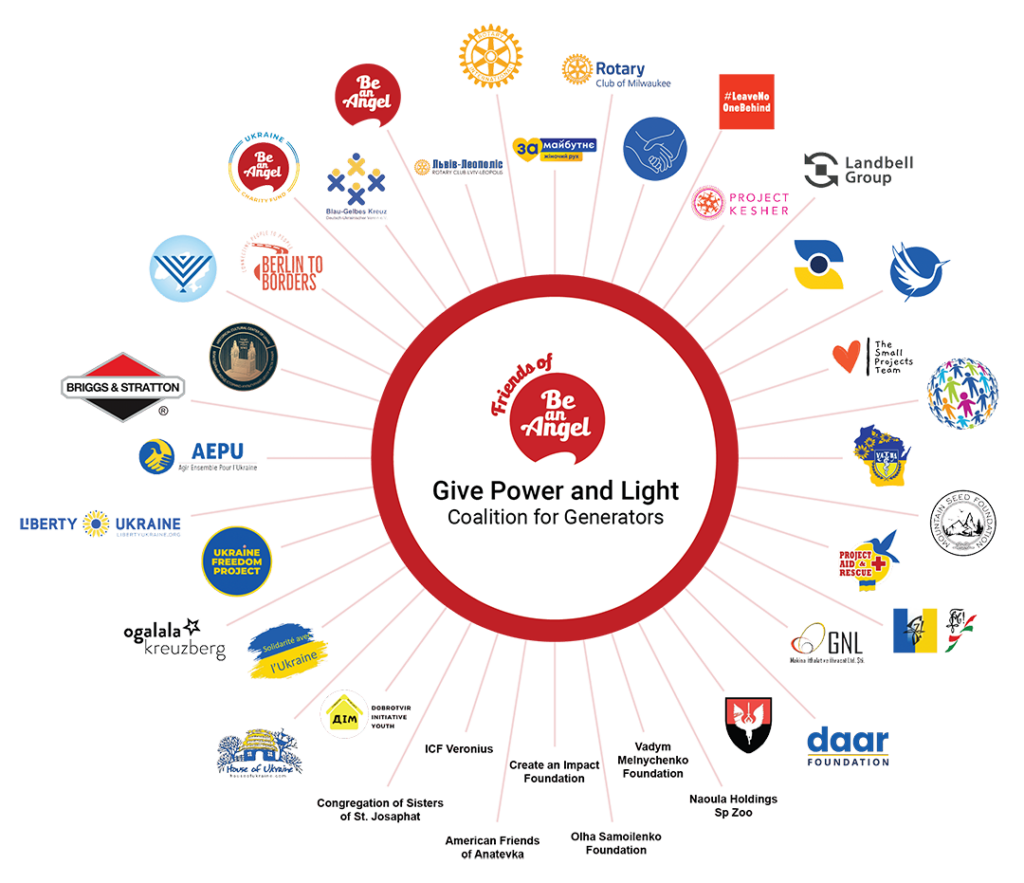Inventory
Below is a detailed table that provides information on the generators distributed throughout Ukraine. The table contains essential details about the generators, including the number of units, weight, unit costs for manufacturing, and their market value at the time of the crisis. The map above showcases the major regions where the generators were distributed to. Recipients of the generators include first responders, hospital, community centers, schools, religious centers, refugee centers and more. In particular, a focus was placed on providing auxiliary power solutions to the Donetsk region where the highest concentration of IDP movement is taking place.
Distribution
In total, over 150 (9.5%) hospitals and clinics , 80 (5%) warming stations, 478 (28%) refugee centers, 231 (13%) community centers and religious institutions, 238 (14%) disadvantaged families with disabilities and medical needs requiring power, 15 (1%) orphanages and 34 (2%) schools were given generators to continue their life-sustaining operation. The remaining generators were distributed to frontline medics and rescue operations. An estimated total of 20,475 people have been directly helped within the first week of this project. As time passes, this number is expected to increase steadily as new patients come into the hospital or new displaced persons arrive at the warming stations.
Each type of generator was produced for a specific use case. The larger units were distributed primarily to hospitals and clinics and other larger, stationary need locations. There, they are providing auxiliary power for surgical equipment, ventilation equipment and monitoring equipment. The generators provided through this grant most notably reached the National Institute of Cardiovascular Surgery. This is the largest and most well-known children’s cardiology hospital which provides life-saving heart surgeries for children. In addition, generators were provided to regional and hospitals in Kyiv, Lviv and Volyn. These regions, although still under risk from long-range missile and drone strikes, are regions with high concentrations of overlapping air defense capabilities and are therefore considered green zones. Many Ukainian civilians and soldiers who are suffering from severe injuries are brought to these hospitals because of their safety and more stable power situation. There they can receive more advanced treatment which is not available in frontline hospitals. Nonetheless, the strikes on critical infrastructure were nationwide, and auxilliary power sources for these hospitals were of the utmost importance.
Throughout the energy crisis, the Emergency Services of Ukraine placed hundreds of warming stations in cities, towns and villages which were heavily affected by power outages and shortages. They were named “Points of Invincibility” by the Ukrainian President Volodymyr Zelenskyy, because they are locations where the general population can regain their strength, mood and morale to feel invincible again. These locations offered heat, warm food, clean water, a place to charge your phone, sometimes even a starlink system for Wi-Fi access. Through the expansive logistical reach of our coalition network, hundreds of our generators were distributed directly to these points. These locations gave shelter to thousands of internally displaced persons and particularly vulnerable Ukrainians in frontline regions.
Hundreds of generators were distributed to community centers and disadvantaged families. In particular, one of our partners focused on families that required a ventilation system at home for disabled or ill family members. Through our large coalition network, they were able to rapidly find families that required electricity for life-support equipment and was able to distribute effectively to their region through this newly formed network.
Mid-sized units such as the 8 kW and 12 kW units were delivered to community and refugee centers. Once there, they served a wide range of purposes, such as powering water pumps.








